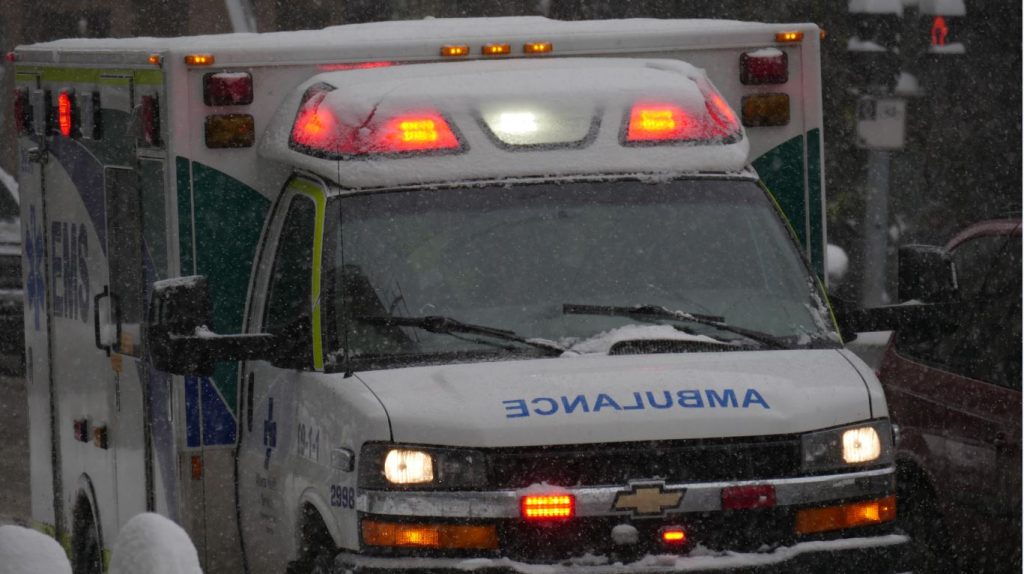Having EMS, fire and police in same room could help response: Former Calgary chief

A former chief of emergency medical services in Calgary says having medical dispatchers back in the same room as police and fire call-takers could help to improve ambulance response times.
Tom Sampson, who also served as deputy fire chief and chief of the Calgary Emergency Management Agency, said he has followed the case of an 86-year-old woman who died after waiting 30 minutes for an ambulance.
Betty Ann Williams was attacked by three dogs while gardening in a northwest Calgary neighbourhood in June 2022.
Advertisement
An independent review was ordered by Alberta Health Services, which oversees EMS, after concerns were raised about the delayed ambulance response.
The Health Quality Council of Alberta released a report Thursday that found staff and ambulance shortages, as well as communication issues, led to the delay. It said the provincial consolidation of Alberta’s medical dispatch system did not slow the response, but noted there’s “tension” between the two emergency call centres that are no longer at the same location.
Sampson, who worked for the city when the emergency dispatch services were in the same place, said the report took a siloed approach.
“Calgary’s integrated system was arguably one of the best in the world,” he said. “The training of the staff in the centre was fantastic and the collaboration between all three services was good.”
Sampson said an integrated system also allowed dispatchers to back each other up.
Advertisement
“If fire is extremely busy because there’s a large three-alarm fire going on, dispatchers from the other side of the room can help out,” he said. “Fire dispatchers can help EMS folks when they are overloaded.”
The report said EMS dispatch was short-staffed on the day of Williams’ death, 31 of 38 ambulances were staffed and there were no ambulances available. It said a city bylaw officer and a 911 dispatcher also couldn’t reach EMS to provide an update on Williams’ condition.
Related Stories:
-
EMS response time for Calgary women in fatal dog attack investigation concludes
-
Elderly woman dead after dog attack in northwest Calgary
Charlene McBrien-Morrison, CEO of the Health Quality Council, said Thursday the report found an integrated dispatch centre likely wouldn’t have fixed the issue.
“The communication protocols were in place, they just weren’t used correctly,” she said.
“In our report, you’ll see reference to a premise that a ‘twist and shout’ would have fixed things. No, that’s not something you would want to base a best practice in delivering emergency services on. We want hard and fast communications avenues that should be utilized.”
Advertisement
The city’s deputy chief of 911 operations said it’s a busy, intense environment, but there were opportunities to turn to a co-worker and say: ‘This is bad, we need an ambulance there right away.’
Sampson agreed.
“We’re talking about what Calgarians need, what Albertans need,” he said. “Sometimes in big centres like Calgary and Edmonton, the (integration) of dispatch is about everybody working together to get a better quality access across the board.”
Related Video
Sampson said it’s important for Alberta Health Services to consider whether there’s a better way to operate.
“There could be a hybrid model developed,” he said.
Advertisement
“Staff can work for Alberta Health Services and staff can work for the City of Calgary and staff can work for the fire department — whoever it is — but there’s a way to make it happen.”
He said he believes AHS wanted to be independent, but some emergencies need police, fire and EMS to work together.
Sampson said it happens all the time in the field.
“There’s not a police officer that wouldn’t have a paramedic’s back and there’s not a firefighter who wouldn’t assist a paramedic when there is a problem,” he said. “So, you need to have that same approach in your senior leadership of your AHS dispatch.
“Had they been together, you probably wouldn’t have needed this review.”